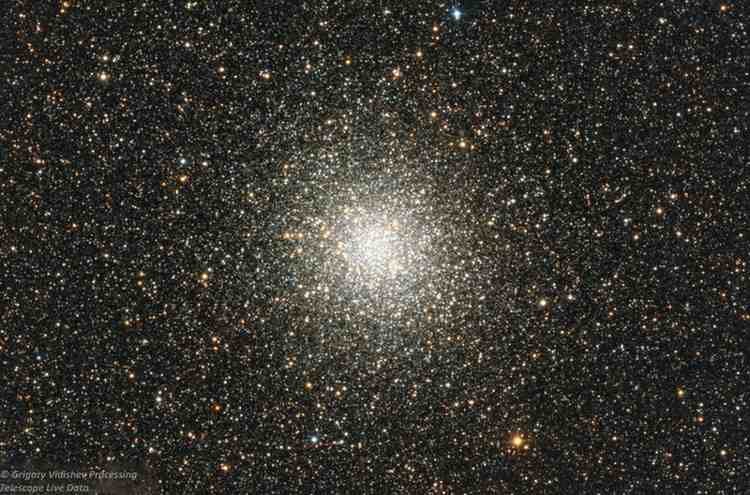

M 22 Great Sagittarius Globular Star Cluster
| Description |
Messier 22, or M22, also known as the Great Sagittarius Cluster, is an elliptical globular cluster of stars located in the constellation Sagittarius, near the Galactic bulge region. It is one of the brightest globular clusters visible in the night sky, with its brightest stars reaching an 11th magnitude. Hundreds of stars within the cluster are bright enough to be resolved using an 8-inch telescope. M22 is situated just south of the Sun’s position in mid-December and northeast of Lambda Sagittarii (Kaus Borealis), the northernmost star in the “Teapot” asterism. M22 was one of the first globular clusters to be discovered, identified in 1665 by Abraham Ihle. It was later included in Charles Messier’s catalog of comet-like objects in 1764. This cluster was one of the first to be studied carefully; Harlow Shapley conducted research on it in 1930, estimating that it contains roughly 70,000 stars and has a dense core. Following Shapley’s work, Halton Arp and William G. Melbourne continued studies of M22 in 1959. Due to the significant color variation in its red giant branch (RGB) sequence, similar to that of Omega Centauri, M22 became the focus of intense scrutiny beginning in 1977, particularly under the research of James E. Hesser and his team. |
|---|---|
| Data/Processing Attribution | Data was purchased from Telescope Live and I did processing only. |
| Distances/Size | Distance to the object- 10,600 light years; angular size in the sky is about 32’ (minutes); size of the cluster is about 51 light years in diameter |
| Equipment | Mount-Software Bisque Paramount MX+ GEM; Scope- Takahashi, 106 mm aperture, 382mm focal length; Camera- QHY600 M Pro. |
| Observatory | Telescope Live, IC Astronomical Observatory, Spain. |
| Exposure | LRGB filters, total exposure- 8 hours 20 min. |
